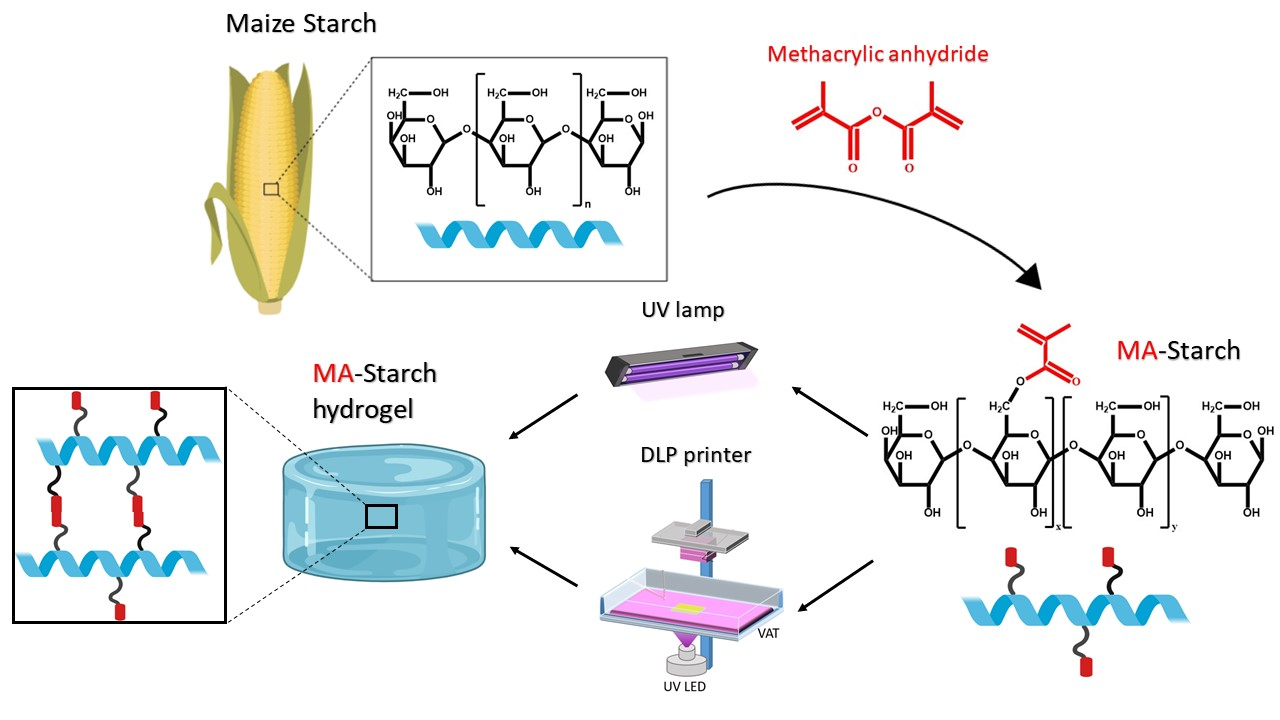In our latest paper, we produced light processable hydrogels by utilizing maize starch as raw material. Congrats to all co-authors from Politecnico di Torino and KTH Royal Institute of Technology!
Camilla Noè,Chiara Tonda-Turo, Annalisa Chiappone, Marco Sangermano and Minna Hakkarainen
Light processable hydrogels were successfully fabricated by utilizing maize starch as raw material. To render light processability, starch was gelatinized and methacrylated by simple reaction with methacrylic anhydride. The methacrylated starch was then evaluated for its photocuring reactivity and 3D printability by digital light processing (DLP). Hydrogels with good mechanical properties and biocompatibility were obtained by direct curing from aqueous solution containing lithium phenyl-2,4,6-trimethylbenzoylphosphinate (LAP) as photo-initiator. The properties of the hydrogels were tunable by simply changing the concentration of starch in water. Photo-rheology showed that the formulations with 10 or 15 wt% starch started curing immediately and reached G’ plateau after only 60 s, while it took 90 s for the 5 wt% formulation. The properties of the photocured hydrogels were further characterized by rheology, compressive tests, and swelling experiments. Increasing the starch content from 10 to 15 wt% increased the compressive stiffness from 13 to 20 kPa. This covers the stiffness of different body tissues giving promise for the use of the hydrogels in tissue engineering applications. Good cell viability with human fibroblast cells was confirmed for all three starch hydrogel formulations indicating no negative effects from the methacrylation or photo-crosslinking reaction. Finally, the light processability of methacrylated starch by digital light processing (DLP) 3D printing directly from aqueous solution was successfully demonstrated. Altogether the results are promising for future application of the hydrogels in tissue engineering and as cell carriers
Light Processable Starch Hydrogels






